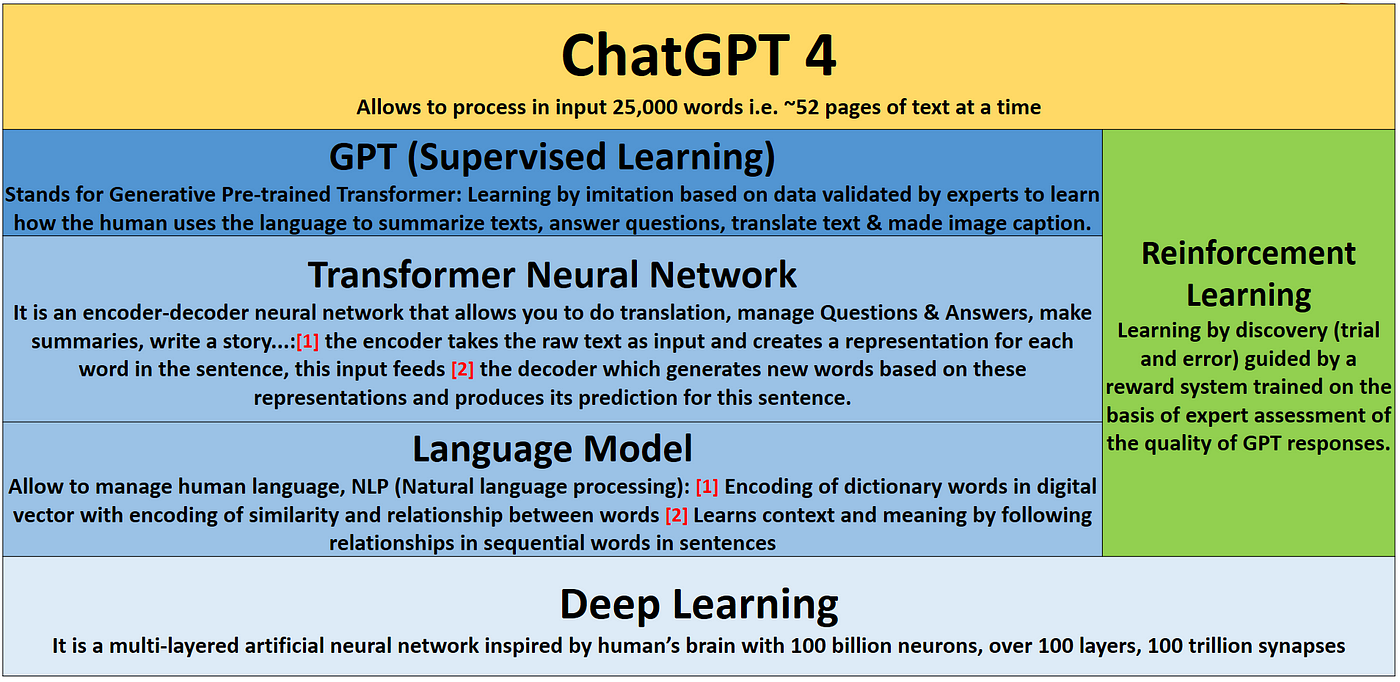ChatGPT: Everything You Need to Know - DevX
Home »
October 2024 – ChatGPT update
ChatGPT has rapidly become a household name in the world of artificial intelligence since its launch in November 2022. Developed by OpenAI, this NLP tool has revolutionized how we interact with machines by generating text that closely mimics human conversation. As of October 2024, ChatGPT continues to evolve, incorporating new features and expanding its applications across various industries. This article delves into the history, functioning, applications, competitors, security concerns, and future prospects of ChatGPT.
Evolution of ChatGPT
The journey of ChatGPT began with the development of Generative Pre-Trained Transformers (GPT) by OpenAI. Starting with GPT-1 in 2018, the technology evolved through GPT-2 and GPT-3, each bringing significant advancements in language processing and text generation. ChatGPT, based on GPT-3, was launched in November 2022 and quickly gained one million users in less than a week. The release of GPT-4 in 2023 further enhanced its capabilities, solidifying ChatGPT’s position as a leading AI tool.

The core of GPT is the Transformer architecture, a type of neural network introduced in 2017. This architecture uses a self-attention mechanism, which allows the model to weigh the importance of different words in a sentence. Over the years, the models have become more sophisticated, with GPT-3 being trained on 175 billion parameters and GPT-4 introducing multimodal capabilities.
The AI bot, developed by OpenAI and based on a large language model (or LLM), has continued to grow in terms of its scope and intelligence.
Functionality of ChatGPT
ChatGPT is built on a type of neural network called a Generative Pre-Trained Transformer (GPT). These models are trained on vast amounts of text data to predict the next word in a sentence. This prediction capability allows ChatGPT to generate coherent and contextually relevant responses.
ChatGPT works by attempting to understand your prompt and then spitting out strings of words that it predicts will best answer your question, based on the data it was trained on. This process involves several steps:
- ChatGPT doesn’t truly understand the text like humans do; it mimics human conversation by recognizing patterns in the data it was trained on.
- Despite its advanced capabilities, ChatGPT can sometimes produce incorrect or nonsensical answers, as it relies on patterns rather than actual understanding.

Applications of ChatGPT
ChatGPT has revolutionized customer service by providing quick and accurate responses to customer inquiries. With ChatGPT in your pocket, businesses can offer 24/7 support without the need for human agents. This not only reduces costs but also improves customer satisfaction. ChatGPT can handle a wide range of tasks, from answering frequently asked questions to resolving complex issues.
Content creation has become easier and faster with ChatGPT. It can generate articles, blog posts, and even creative writing pieces. This tool is especially useful for marketers and writers who need to produce high-quality content quickly. ChatGPT can also help with editing and proofreading, ensuring that the final product is polished and professional.
ChatGPT is a valuable resource for programmers. It can generate code snippets, debug errors, and even help with complex programming tasks. This makes it an essential tool for both novice and experienced developers. Additionally, ChatGPT can assist in learning new programming languages by providing explanations and examples.
Competitors and Privacy Concerns
Google’s Gemini, previously known as Bard, is a major competitor to ChatGPT. Integrated into Google search and other services, Gemini focuses on generating text that sounds naturally human. Gemini is built on a proprietary large language model also called Gemini, and it aims to provide real-time information from the web.
Amazon has entered the AI chatbot market with Q, a generative AI-powered assistant designed for work environments. Q aims to streamline tasks and improve productivity, making it a strong contender in the business sector.
Several other AI tools have emerged as alternatives to ChatGPT, each offering unique features:

The competitive landscape for AI chatbots is rapidly evolving, with new tools continually emerging to challenge ChatGPT’s dominance.
Future Developments
OpenAI plans to release “strawberry”, its reasoning-focused artificial intelligence, as part of its ChatGPT service in the next two weeks. This update is expected to enhance the model’s ability to understand and generate more complex and nuanced responses. New features like these will keep ChatGPT at the forefront of AI technology.
Conclusion
ChatGPT’s influence in the business world is growing rapidly. Companies are using it for customer service, content creation, and even programming assistance. The AI’s ability to handle multiple languages and generate human-like text makes it a valuable tool for global businesses. As more businesses adopt ChatGPT, its role in streamlining operations and improving efficiency will only increase.
The future of AI, including ChatGPT, looks promising. We can expect more advanced models that are faster, more accurate, and capable of understanding context better. These improvements will make AI tools even more useful in various fields, from education to healthcare. The ongoing advancements in AI technology suggest that we are just scratching the surface of what is possible.
ChatGPT has come a long way since its launch in November 2022. With millions of users worldwide, it has proven to be a powerful tool in generating human-like text. The advancements with GPT-4 in 2023 and the introduction of GPT-4o in 2024 have only strengthened its capabilities. Despite some concerns about biases and inaccuracies, ChatGPT continues to grow and evolve, impacting various industries. As we look to the future, it’s clear that ChatGPT and similar AI tools will play a significant role in shaping how we interact with technology. Whether for business or personal use, ChatGPT is here to stay, making our lives easier and more efficient.




















